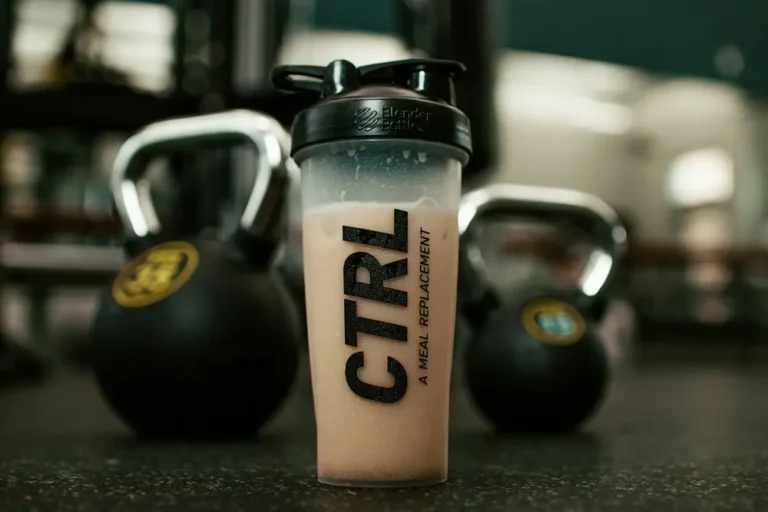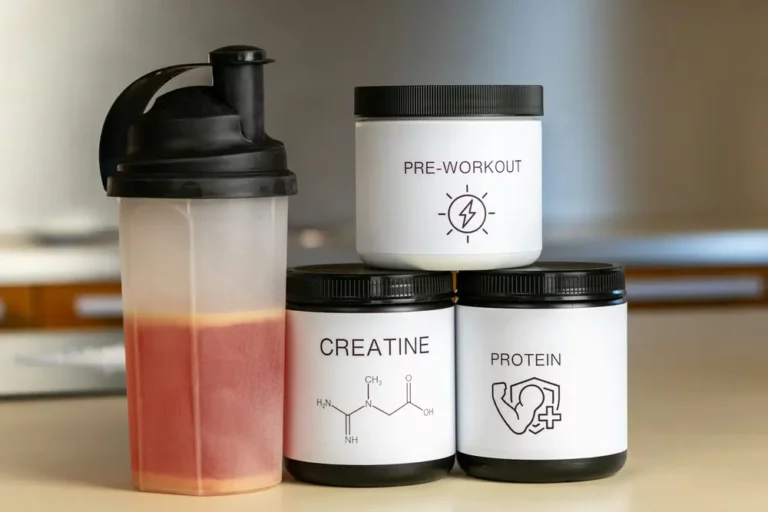How to Fix an Uneven Chest: Exercises, Nutrition, & Recovery Tips
I’ve been there, staring at the mirror, frustrated with my uneven chest muscles. It’s a common issue, but when it’s your reflection, it feels anything but. The good news? I’ve navigated these choppy waters and found a way through. Now, I’m here to share that knowledge with you.
Tackling an uneven chest isn’t just about aesthetics; it’s about regaining balance and confidence. In this article, I’ll walk you through the causes of uneven chest muscles and the most effective exercises and techniques to even things out. Trust me, it’s a journey worth taking, and I’m excited to guide you every step of the way.
What Is Uneven Chest?
Embarking on this journey to fix my uneven chest has been enlightening, and I’m eager to share my findings with you. Let’s delve into what causes uneven chest muscles and the anatomy involved and dispel some common myths surrounding this issue.
Causes of Chest Asymmetry
I’ve learned that the road to fixing an uneven chest starts with understanding what causes it, and I’ve encountered quite a few explanations. Muscle imbalances are a primary culprit; they can occur from favoring one side during workouts or daily activities. Additionally, variations in muscle insertions, where your muscles attach to the bones, play a big role. It’s not all about what you do; sometimes, it’s about the hand you’re dealt with genetically. I was surprised to find out that injuries can also lead to uneven chest development, especially if one side compensates for the other during recovery. Lastly, improper training techniques can exacerbate or even cause asymmetry if not corrected early on. This can also lead a gap between pecs, something most people want to avoid.
Anatomy of the Chest Muscles
Understanding the anatomy of the chest was crucial for me. Your chest is primarily made up of two muscles: the pectoralis major and the pectoralis minor. The pectoralis major is the larger muscle covering most of the chest area, responsible for movements such as pushing and lifting. Beneath it lies the pectoralis minor, smaller and involved in movements of the shoulder blade. These muscles work together but can develop unevenly if not trained appropriately. Exploring this helped me tailor my workouts to ensure both sides of my chest received equal attention and effort.
Common Myths About Uneven Chest Development
In my quest to even out my chest, I stumbled upon numerous myths. One of the most widespread is the belief that focusing exclusively on one side can quickly correct the imbalance. However, I learned that this approach could lead to further asymmetry or even injury. Another myth is that chest unevenness is solely a cosmetic issue. While aesthetics are a significant concern for many, including myself, imbalances can also affect physical performance and posture. Lastly, it’s a myth that supplements or specific diets can directly fix an uneven chest. Although proper nutrition and supplements can support muscle growth and recovery, they can’t target asymmetry directly.
Assessing Your Chest Imbalance
When you’re dealing with an uneven chest, it’s essential to start by pinpointing exactly what you’re up against. I’ll guide you through how to identify which side of your chest needs more work, how your posture could be contributing to the imbalance, and the importance of incorporating a balanced training regimen. Let’s dive in.
Identifying the Weaker Side
First things first, we need to figure out which side of your chest is lagging. For me, it was pretty evident when I looked in the mirror during workouts—I noticed one pec bounced back faster during push-ups. To spot your weaker side, try performing a set of push-ups and observe which pectoral muscle fatigues first or doesn’t rise symmetrically. Another way is to watch out for dominance during unilateral exercises like dumbbell presses; the side that struggles or lifts less is likely your weaker side.
The Role of Posture in Chest Development
I’ve learned that posture plays a massive role in how our chests develop. If your chest is not growing the way you want it, then maybe your posture needs to be improved. A slouched or asymmetric posture can significantly contribute to an uneven chest since it can cause one side of your muscle to stretch more, becoming weaker over time. Pay attention to how you sit, stand, and especially how you perform exercises. Improving posture can not only help correct chest imbalance but can also prevent future issues. I started incorporating posture exercises into my routine, focusing on keeping my shoulders back and my spine straight, whether I was sitting at my desk or lifting weights.
Importance of a Balanced Training Routine
Let’s talk about the importance of a balanced training routine. It’s easy to fall into the trap of overtraining our stronger side simply because it feels more satisfying to lift heavier on that side. But trust me, reinforcing this imbalance will only set you back further. I made a conscious effort to give equal attention to both sides, using symmetrical exercises to ensure both pecs were engaged equally. Also, incorporating unilateral exercises helped me specifically target the weaker side without letting the dominant side take over. A well-structured routine that focuses on balance and correcting asymmetry can make all the difference in achieving a well-developed chest.
Corrective Exercises for an Uneven Chest
Unilateral Exercises to Promote Symmetry
Unilateral Dumbbell Chest Press
When it comes to fixing an uneven chest, the unilateral dumbbell chest press is my go-to. By focusing on one side at a time, I ensure that both sides of my chest are receiving equal work. I start with my weaker side, matching the number of reps with my stronger side to promote symmetry. It’s crucial to maintain control and focus on form to optimize muscle engagement.
One-Arm Low Dumbbell Fly
I’ve found the one-arm low dumbbell fly to be incredibly effective at stretching and strengthening the chest muscles, especially the weaker side. I do this exercise by lying flat on a bench and slowly lowering the dumbbell in an arc, keeping my arm slightly bent. This exercise not only works on my chest but also involves my shoulders and back, enhancing overall upper body strength.
Cross Body Seated Chest Press
The cross-body seated chest press has been a game-changer for me. Executing this movement involves pressing a dumbbell across my body while seated, targeting the inner chest muscles. It helps me focus intensively on the pecs, promoting growth and symmetry. Attention to form is paramount here to avoid any unnecessary strain.
Dumbbell Workouts for Balance
Dumbbell Alternating Front Raise
Not only have I implemented unilateral chest exercises, but I’ve also included dumbbell workouts like the alternating front raise to improve balance and core stability. This move is straightforward but incredibly effective, targeting the shoulders and chest. I’ve noticed a significant improvement in my posture, which in turn aids in achieving a balanced chest.
One-Arm Push-Ups
For those looking for a challenge, one-arm push-ups are the way to go. They’re tough, but the benefits are undeniable. Not only do they target chest imbalances, but they also build overall body strength and endurance. I started with my knees on the ground to master the form before advancing to the traditional stance.
Guillotine Press and Vince Gironda Dumbbell Press
Last but not least, the guillotine press and Vince Gironda dumbbell press have become staples in my routine. The guillotine press, with its neck-targeting motion, and the Gironda press, with its unique angle and grip, both focus on the upper chest. These exercises have been instrumental in my journey to achieving a more even chest. I’ve learned that mixing up routines and incorporating different exercises aids in targeting every muscle, ensuring no area is left behind.
Training Techniques for Chest Symmetry
Today, I’ll dive into the nitty-gritty of honing your chest symmetry through targeted training techniques. Uneven chest muscles can be frustrating, but with the right approach, improvements are within reach.
Adjusting Reps and Sets for Balance
First off, let’s talk about tweaking your reps and sets—this is crucial. Often, an uneven chest is a result of imbalances in strength and muscle development. To tackle this, I’ve found that focusing more on the lagging side can help restore balance. Here’s my strategy: I perform one or two extra sets or a few more reps on the weaker side. Remember, the goal isn’t just to lift heavy; it’s to achieve symmetry and balance. By doing so, the weaker side gradually catches up, leading to a more balanced chest development.
Importance of Mind-Muscle Connection
Next, let’s chat about something a tad less tangible but equally important—the mind-muscle connection. It sounds a bit mystical, but I assure you, it’s grounded in science. The idea here is to concentrate fully on the muscle you’re working on. During each rep, I visualize my chest muscles engaging and contracting. This mental focus enhances muscle activation and leads to more effective workouts. Especially for the chest that’s lagging, concentrating your mind solely on that side can make a world of difference. Don’t just go through the motions. Feel each rep and make it count.
Progressive Overload and Its Impact
Last but definitely not least, let’s delve into progressive overload. This principle is about gradually increasing the weight, reps, or intensity of your workouts over time. This approach is gold for achieving chest symmetry. Start with weights that you can manage evenly on both sides and slowly build up. The key here is ensuring that both sides of your chest are exerting equal effort and developing at the same pace. Progressive overload isn’t just about getting stronger; it’s about evolving your workouts in a balanced manner for consistent improvements.
Advanced Strategies for an Even Chest
Working on an uneven chest can be quite a challenge. Despite what many might think, it’s more common than you’d expect. I’ve been there, tirelessly trying to balance my pecs, and over time, I’ve found several advanced strategies that have proved instrumental. Here’s how I took my chest from uneven to aesthetically symmetrical.
Specialized Workouts for Targeted Growth
First things first, I realized I needed to tweak my workouts to specifically target the underdeveloped side of my chest. This meant breaking the “both at once” rule of conventional chest exercises. Unilateral movements became my best friend. Dumbbell presses and flies focusing solely on the weaker side helped me significantly. I would start my workout with these targeted exercises, ensuring the weaker pec was thoroughly pre-exhausted. This approach allowed me to dedicate more time and energy to stimulating growth where it was needed most.
Adjusting Grip and Equipment for Symmetry
Next up, grip adjustments and equipment choices played a huge role in my progress. I found that by simply altering my grip width or angle, I could shift more emphasis onto the lagging parts of my chest. Cable machines were particularly useful for this purpose, as they allowed me to adjust the angle of pull in minute ways, ensuring I hit all areas of my pecs evenly. I also experimented with using different bars for presses, switching between straight, cambered, and even Swiss bars to diversify muscle engagement and stimulation.
Muscle Activation Techniques and Corrective Stretches
Lastly, I dug into muscle activation and stretching. I learned that sometimes, muscles don’t develop symmetrically due to improper activation rather than lack of effort. So, I started incorporating drills to ‘wake up’ the less responsive pec before heavy lifting. Small, isometric holds and trigger point release techniques were particularly effective at increasing my mind-muscle connection with the dormant areas. Moreover, adding corrective stretches helped in releasing tightness in the overactive areas, which in turn, permitted smoother, more balanced growth.
Through these strategies, I saw a significant improvement in the symmetry of my chest. Adjusting workouts for targeted growth, making smart grip and equipment changes, and enhancing muscle activation and flexibility made a noticeable difference. It took patience, experimentation, and consistency, but the results were absolutely worth it.
Beyond the Gym: Lifestyle Changes for Optimal Results
When I embarked on my journey to fix my uneven chest, I quickly realized that what I did outside the gym was just as crucial as my workouts. To truly even out my chest muscles, I had to adjust my lifestyle, focusing on nutrition and rest to support muscle repair and growth. Let me walk you through some of the lifestyle changes I made that played a pivotal role in my progress.
Nutritional Support for Muscle Repair and Growth
I learned early on that my muscles needed the right fuel to grow and repair after those intense workouts. I focused on increasing my protein intake, aiming for foods rich in quality protein like chicken, fish, legumes, and whey protein supplements. Protein is essential for muscle repair, and ensuring I got enough daily was a game-changer.
Equally important were carbohydrates. I incorporated complex carbs like oats, brown rice, and sweet potatoes into my meals to maintain my energy levels throughout the day and especially during workouts. Healthy fats from avocados, nuts, and olive oil were added to my diet to support hormone function, which plays a role in muscle growth.
Hydration was another key area. I ensured I drank plenty of water throughout the day, not just during workouts. Staying well-hydrated helped improve my performance and aided in recovery by keeping the muscles well-nourished.
The Importance of Rest and Recovery
Rest and recovery were areas I admittedly overlooked at the start. However, I soon understood that muscles grow during rest, not when you’re lifting weights. Getting enough sleep became a priority for me; I aimed for 7-9 hours every night. This helped reduce cortisol, a stress hormone that can prevent muscle growth and boosted the production of growth hormone, essential for muscle repair and growth.
I also incorporated active recovery days into my routine, opting for light activities like walking or yoga. This helped keep my muscles loose, improved blood flow, and facilitated the removal of toxins, reducing muscle soreness and speeding up recovery.
Conclusion
I’ve shared quite a bit on fixing an uneven chest, from targeted exercises to the often-overlooked lifestyle habits that play a huge role. Remember, it’s not just about the workouts. Your nutrition, rest, and how you listen to your body are equally important. I can’t stress enough how a balanced diet, proper hydration, and enough sleep can transform your efforts in the gym. It’s all about giving your body what it needs to repair, grow, and balance itself out. So, take these tips, apply them consistently, and you’ll be on your way to a more symmetrical chest—and overall better health and fitness. Here’s to your success!
FAQ – Frequently Asked Questions
How many pushups should I do a day?
If you can do fewer than 25 push-ups in a row, aim for 50 to 75 push-ups daily. If your max is between 25 and 50 push-ups, target 75 to 150 push-ups. For those over 50 (with proper form), 150 to 250 push-ups is ideal.
Why is one side of my chest bigger than the other?
An uneven chest can stem from underdeveloped muscles due to congenital birth defects, injuries, infections, or asymmetrical muscle development, which is fairly common but usually not conspicuous.
Is chest width genetic?
Yes, the size and shape of our pecs are significantly influenced by genetics. While it’s challenging to alter specific portions of the pecs dramatically, the overall muscle size can be increased through targeted training.







